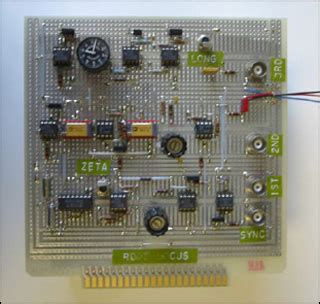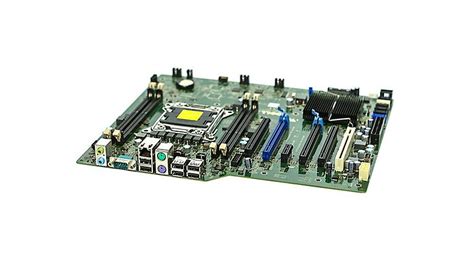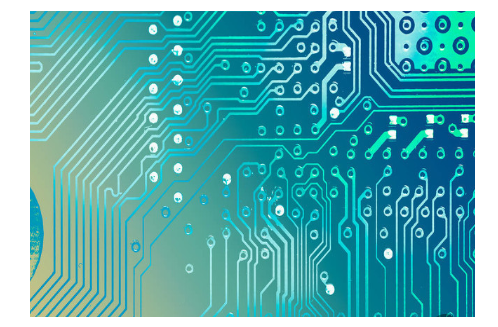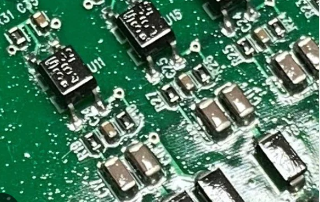Unlocking Quality and Affordability: Guide to Cheap PCB Assembly
Key Takeaways
When embarking on a project that requires PCB assembly, understanding the nuances of the process can significantly impact both the quality and cost-effectiveness of the final product. Effective management of costs associated with PCBA involves several key factors, such as selecting suitable suppliers, determining the complexity of the design, and ensuring efficient manufacturing techniques. To achieve affordable production without sacrificing quality, it’s crucial to adopt best practices that streamline processes and squeeze out unnecessary expenses.
For instance, opting for bulk orders can lead to significant savings while choosing materials wisely can further enhance price efficiency without compromising performance. The commitment to quality control is paramount even in budget-friendly scenarios; ensuring that each step in the production cycle meets industry standards will prevent costly reworks or failures down the line. As businesses weigh their options, comparing domestic versus offshore PCB assembly services reveals various trade-offs in terms of cost and lead time, impacting overall project viability. By analyzing real-life case studies, stakeholders can draw insights on how others have successfully navigated the landscape of cheap PCB assembly, highlighting that affordability does not always equate to reduced quality. Keeping an eye on future trends will also equip businesses with strategies to continue benefiting from cost-effective PCB manufacturing as technology evolves.
Understanding PCB Assembly: What You Need to Know
PCB assembly, often referred to as PCBA, is a crucial step in the development of electronic devices. It involves assembling various electronic components onto a printed circuit board, transforming complex designs into functioning products. Understanding the basics of this process is essential for anyone looking to engage in cost-effective solutions without sacrificing quality. Many factors come into play in the PCB assembly phase, including component sourcing, soldering methods, and testing procedures. By familiarizing yourself with these elements, you can significantly streamline production and manage costs effectively.
When considering cheap PCB assembly, it’s important to realize that quality should never be compromised for affordability. A well-executed PCBA can greatly enhance the reliability and longevity of your electronic products. Keeping abreast of industry standards and employing best practices can prevent costly errors down the line.
“Investing time in understanding the nuances of PCB assembly will pay off as you navigate the cost landscape, ultimately leading to more efficient production cycles.”
Furthermore, exploring different pcb assembly techniques will enable you to identify which methods align best with your project requirements & budget constraints. Staying informed about innovative practices and emerging technologies in PCBA can open doors to substantial savings without sacrificing performance. Embrace learning opportunities and ensure that your exit strategy encompasses not just immediate fiscal considerations, but also long-term quality assurance strategies essential for competitive market presence.
Key Factors Influencing Cost-Effective PCB Assembly
The cost-effectiveness of PCB assembly (also known as PCBA) is significantly influenced by several key factors that should be understood by manufacturers and designers alike. First and foremost, the complexity of the circuit board design plays a crucial role; more intricate designs typically lead to increased manufacturing costs due to the need for specialized equipment and skilled labor. Additionally, the scale of production is a vital consideration. Mass production often results in lower costs per unit due to economies of scale, allowing for more affordable PCBA without sacrificing quality.
Another essential factor is the choice of materials used in the assembly process. Selecting standard components can lead to significant savings, whereas opting for custom parts may incur higher expenses. Supplier relationships can also impact costs; working with reliable suppliers who offer competitive pricing and consistent quality can lead to better overall affordability in achieving high standards for PCB assembly.
In recent years, advancements in automation have greatly influenced manufacturing costs as well. By implementing automated processes, companies can reduce labor expenses and improve precision in PCBA production. This shift towards automation requires an initial investment but pays off in reduced long-term operational costs.
To further examine these factors, consider the following table:
| Factor | Influence on Cost | Explanation |
|---|---|---|
| Design Complexity | High | Intricate designs require specialized labor and tools |
| Scale of Production | Moderate | Larger batches lower cost per unit |
| Material Selection | High | Standard parts save money, custom parts increase cost |
| Supplier Relationships | Moderate | Trustworthy suppliers often provide better pricing |
| Automation | Variable | Initial investment offset by long-term savings |
By paying attention to these factors, businesses can strategically navigate their PCB assembly processes to ensure that they remain both cost-effective and aligned with high quality standards.
Best Practices for Reducing PCB Assembly Costs
Professional pcb assembly can often carry significant expenses, but understanding how to efficiently manage these costs is crucial for project success. One of the best practices for reducing costs in pcba involves simplifying the design of the printed circuit board. By minimizing complex components and opting for standard sizes, manufacturers can streamline production, which often results in lower assembly costs. Additionally, consolidating components can reduce the number of parts used, which not only decreases material costs but also shortens assembly time.
Another important practice is to conduct a thorough analysis of your sources. Sourcing components from reliable but cost-effective suppliers can dramatically influence your overall expenses. It’s also beneficial to take advantage of bulk purchasing discounts on materials needed for pcb assembly. Additionally, considering local suppliers may reduce shipping costs and lead times, although one must weigh this against offshore alternatives that might offer lower prices.
Furthermore, creating a comprehensive assembly plan that includes detailed documentation and clear specifications provides clarity to manufacturers and reduces the likelihood of errors or misunderstandings during production. This clarity not only enhances efficiency but also mitigates risks related to rework or material waste—factors that can inflate costs significantly.
Incorporating aspects like these into your approach allows you to achieve affordability without compromising the quality essential in mechanical and electronic applications. With a keen eye on design efficiency, sourcing strategies, and effective planning, it is certainly possible to meet budget requirements while delivering high-standard pcba solutions.
Selecting the Right Materials for Affordable Production
When it comes to pcb assembly, the choice of materials is critical in achieving both affordability and quality. Selecting the right components can significantly influence the overall cost of your pcba project. It’s essential to evaluate various factors such as material specifications, sourcing options, and long-term durability. Utilizing standardized components can streamline procurement and often lead to cost reductions. For instance, opting for more common materials like FR-4 for your pcb assembly may provide a balance between performance and affordability, ensuring you do not compromise on functionality while keeping expenses in check. Moreover, collaborating closely with suppliers can yield better pricing strategies for bulk purchases of necessary components. A thorough understanding of various materials’ characteristics and manufacturing capabilities enables you to make informed decisions that align with both budget constraints and project requirements. Emphasizing sustainable practices by using recyclable or environmentally friendly materials may also enhance your brand’s reputation while contributing to cost management strategies in the long run. Ultimately, careful selection of materials not only optimizes production costs but also maintains high standards of performance and reliability in your pcba endeavors.
The Importance of Quality Control in Budget-Friendly PCB Assembly
In the realm of pcb assembly, maintaining high standards of quality control is crucial, especially when aiming for budget-friendly solutions. Quality control processes ensure that each phase of pcba production meets established benchmarks, even when costs are minimized. By implementing robust testing procedures and quality assessments, manufacturers can identify potential defects early in the process. This not only decreases the likelihood of costly reworks but also safeguards the integrity of the final product. In a competitive market, where clients are increasingly seeking cost-effective solutions, it’s essential to integrate quality assurance as part of a comprehensive pcb assembly strategy. By doing so, businesses can effectively balance affordability with the necessary durability and reliability expected from their designs. Furthermore, fostering a culture that prioritizes quality will enable companies to enhance efficiency and reduce waste, ultimately driving down overall costs while delivering exceptional pcba results that satisfy client requirements.
Comparing Domestic vs. Offshore PCB Assembly Services
When it comes to PCB assembly, businesses often face the critical decision of choosing between domestic and offshore services. Each option offers unique advantages and challenges, impacting not only the cost but also the overall quality and turnaround time of the production process. Domestic PCB assembly services typically provide closer communication, faster shipping times, and easier quality control due to geographical proximity. This is particularly advantageous for prototyping or short-run projects where rapid iterations are essential. However, these benefits may come at a higher cost compared to offshore solutions.
On the other hand, offshore PCB assembly can significantly reduce labor costs and material expenses, making it an attractive option for high-volume production runs. Countries with a strong manufacturing infrastructure often deliver lower PCBA costs; however, this can lead to longer lead times and potential challenges in overseeing the quality of production. Additionally, language barriers and time zone differences may complicate communication and project management.
Ultimately, the choice between domestic and offshore services should be guided by your specific project requirements—balancing factors such as budget constraints, required turnaround time, and desired level of control over the production process. Understanding these dynamics is crucial for making an informed decision that meets both your financial goals and quality expectations in PCB assembly endeavors.
Case Studies: Success Stories in Cheap PCB Assembly
In the realm of pcb assembly, numerous organizations have successfully harnessed cost-effective strategies to produce high-quality printed circuit boards (PCBs). One notable case involves a start-up focused on developing innovative wearable technology. By opting for offshore PCB assembly services, they were able to significantly reduce their manufacturing costs while maintaining rigorous quality standards. They implemented a strategy of forming long-term partnerships with reliable pcba providers, enhancing their supply chain’s efficiency. Another example features a well-established automotive company that, after conducting an exhaustive analysis of their production process, shifted to using alternative materials and streamlined assembly practices. This transformation enabled them to cut costs without sacrificing the quality and durability of their products, demonstrating that effective pcb assembly does not have to be synonymous with high expenses. These success stories illustrate that with the right approach and thorough planning, businesses can achieve remarkable results in affordability while still prioritizing excellence in their pcb assembly processes.
Future Trends in Cost-Effective PCB Manufacturing
As the demand for PCB assembly continues to grow, manufacturers are exploring innovative approaches to enhance efficiency while minimizing costs. One of the most significant trends is the increasing integration of advanced technologies, such as automation and artificial intelligence, into the pcba process. These technologies not only streamline production but also improve accuracy and consistency, which are vital when it comes to maintaining quality during budget-friendly manufacturing. Additionally, the use of additive manufacturing techniques is on the rise, allowing for complex designs that traditional methods may struggle to achieve economically. This trend enables manufacturers to produce intricate circuits more affordably without sacrificing reliability. Furthermore, there is a growing emphasis on sustainable practices, with companies seeking materials that reduce environmental impact while still being cost-effective. As a result, investing in eco-friendly options can also lead to long-term savings and market competitiveness. Overall, staying attuned to these future trends will be essential for those involved in PCB assembly, ensuring that their production processes remain not only affordable but also aligned with contemporary industry standards.
Conclusion
In navigating the complex landscape of PCB assembly, achieving cost-effective solutions is crucial for many businesses and projects. Understanding the nuances of PCBA can significantly influence project success and overall budget management. By focusing on key factors such as material selection, process efficiency, and stringent quality control, organizations can strike the perfect balance between cost and quality. It is essential to recognize that opting for lower costs shouldn’t come at the expense of performance. Therefore, adopting best practices – from meticulous planning to carefully evaluating domestic versus offshore services – can lead to substantial savings without compromising on the standards. With an eye on future trends in cost-effective PCB manufacturing, companies can prepare for evolving market demands while maintaining high-quality outputs in their PCB assembly endeavors.
FAQs
What is PCB assembly?
PCB assembly (or PCBA) refers to the process of soldering electronic components onto a printed circuit board (PCB) to create a functional electronic device. This process is crucial for the production of virtually all electronics.
How do I choose a cost-effective PCB assembly service?
Choosing a cost-effective PCB assembly service requires evaluating vendors based on their pricing, quality standards, and customer reviews. Ensure they use reliable materials and have robust processes to maintain high standards, ultimately affecting the overall affordability of the PCBA.
What factors influence the cost of PCB Assembly?
Several factors impact the cost of PCB assembly, including material sourcing, complexity of design, component types, and production volume. By optimizing these elements, you can achieve more affordable PCBA solutions while maintaining quality.
Are cheaper materials a good option for PCB Assembly?
While opting for cheaper materials can reduce costs initially, it’s vital to consider their long-term effects on product performance and reliability. Striking a balance between cost and quality is essential for effective PCB assembly.
How can I ensure quality control in budget-friendly PCB Assembly?
Implementing strict quality control measures during the PCB assembly process is essential. This includes conducting regular inspections, testing prototypes at various stages, and adhering to industry standards to prevent costly errors later on.







